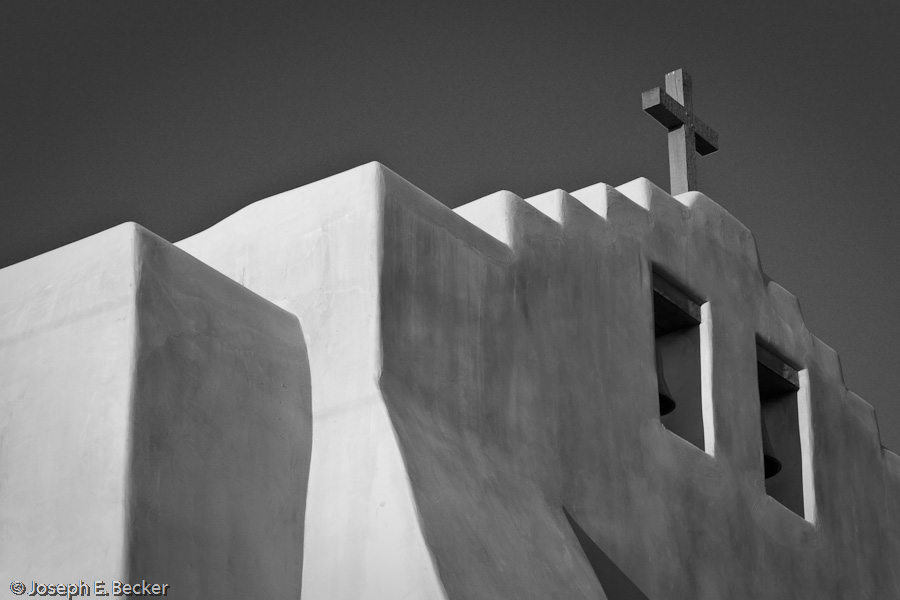
I’m continuing my series of posts about my trip to the Southwest with a look at New Mexican churches – adobe churches in particular. I’ve always enjoyed photographing churches, at least those with classic architectural styles. And in New Mexico, there is nothing more classical than adobe.

If you are interested in seeing churches such as these, I highly recommend traveling the high road between Santa Fé and Taos. There are a number of highly photogenic churches along this route, many described in Laurent Martes‘ excellent book on photographing the natural landmarks of Colorado and New Mexico (okay, I know churches aren’t natural landmarks, but the book is titled Photographing the Southwest Volume 3 – a Guide to the Natural Landmarks of Colorado & New Mexico and does mostly cover natural subjects). By traveling this road, you’re bound to come up with at least one or two decent images – there is always at least one church with good light upon it.
My biggest question concerning the adobe churches I photographed was how best to portray them – in color or in black and white? I leave it to you to decide, providing most images in this post with both versions.
I think they look good both ways, but if forced to make a choice, I’d generally chose the black and white versions. There are exceptions, of course; ever photograph is different. In the examples given here, I do like the black and white images better; they generally do a better job of conveying what I want the to convey. I love the look of a cross on a church really standing out – and that works well with these images except for the image of the San Juan de Los Lagos steeple and black cross, there the color version portrays my vision better. I also love the high contrast of the black and white images. However, I’d like to hear your comments – color or black and white?
For those who care – these black and white conversions were all done rather quickly in Lightroom. If I get serious about any of these, I’ll probably redo the conversions in Photoshop. I like both programs for how easy they make black and white conversions and the ability to adjust the brightness of each color in the images separately. This makes it very easy to turn an all blue sky dark (and make those crosses really stand out).











Leave a Reply